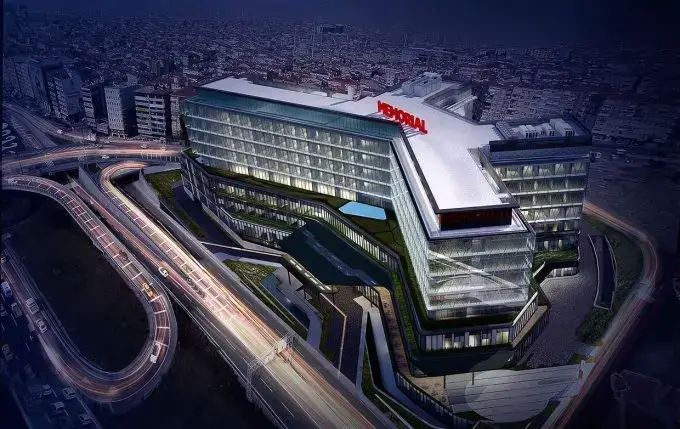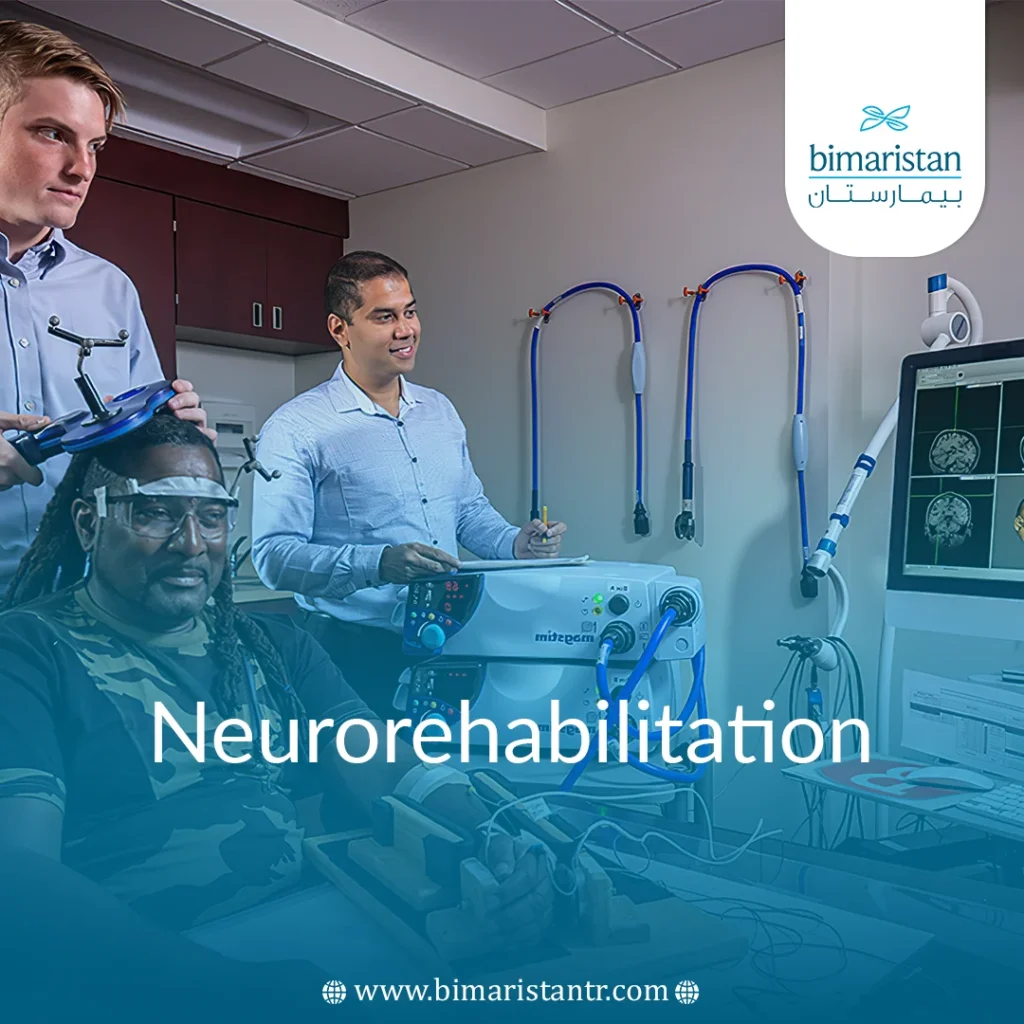Neurological injury can significantly impact a person’s physical, psychological, or cognitive life, which is why specialized neurorehabilitation centers have been established in Turkey.
What does neurorehabilitation mean?
The human nervous system is the controlling leader that gives instructions and sends signals to all body organs to perform their various functions. It regulates the important vital functions that keep a person alive.
Based on the above, there is no doubt that severe injuries to the brain and the nervous system as a whole can have significant effects on people’s lives, whether physically or psychologically, and some of them may leave permanent, irreversible consequences.
The term “neurorehabilitation” refers to measures taken during the recovery phase of neurological injuries to alleviate the symptoms of that injury and improve the quality of life of the injured person.
Rehabilitation of the injured person is a complex process that involves doctors from various medical specialties, such as physical therapists, neurologists, psychiatrists, and doctors from various other specialties.
Recently, neurological rehabilitation has received significant attention, and the methods used in this field have developed. Turkey has given this aspect of treatment great importance, and new advanced treatment techniques have been introduced. The Robotic Center for Physical Therapy has been established, in addition to a number of centers specialized in rehabilitation. Read more about the Robotic Rehabilitation Center.
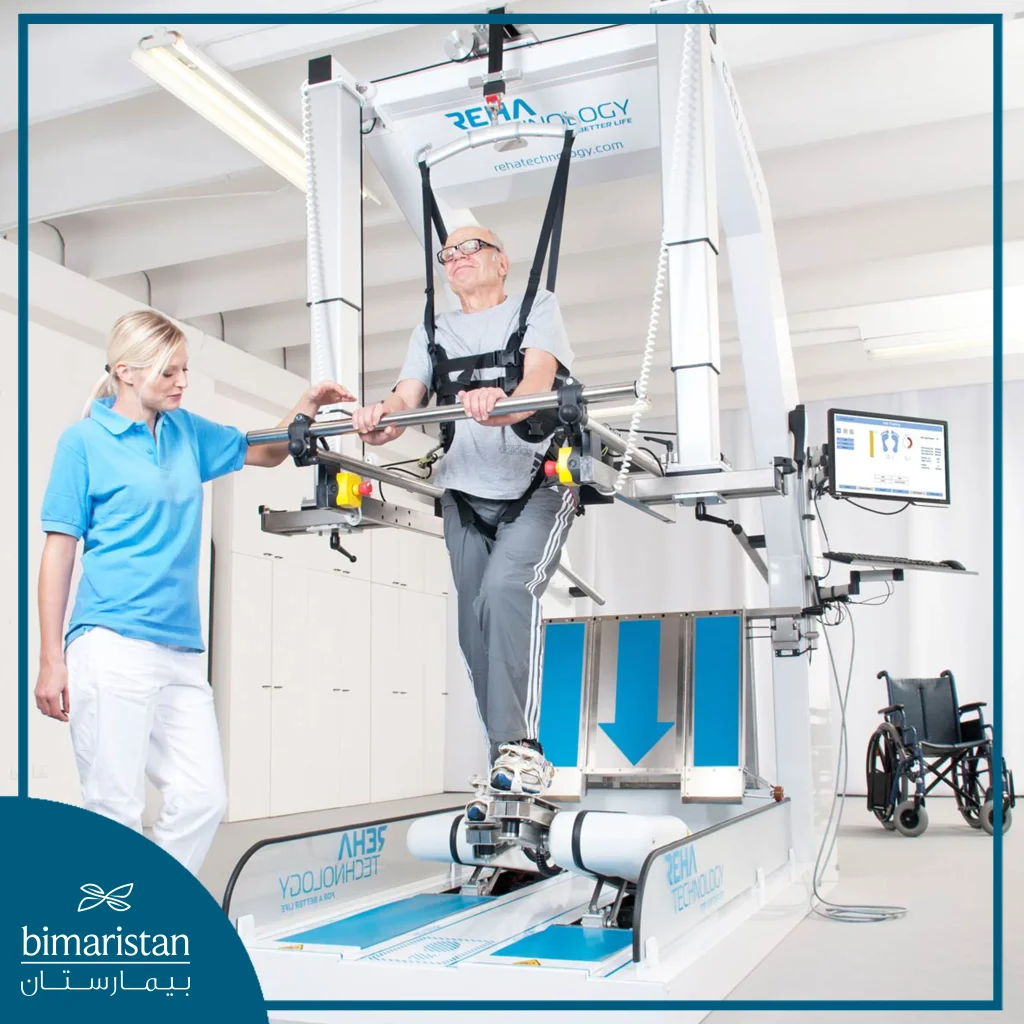
Who needs neurorehabilitation?
Any patient with a neurological disorder that causes neurological symptoms and signs is a good candidate to benefit from a neurorehabilitation program. These causes may vary, and we mention the most important of them:
- Vascular causes such as ischemic or hemorrhagic stroke
- Infections that affect the nervous system, such as meningitis or encephalitis
- Injury to the central nervous system (brain and spinal cord trauma)
- Nervous system tumors such as gliomas and other brain tumors
- Parkinson’s disease and degenerative brain diseases such as Alzheimer’s
- Diseases that affect the myelin sheath, such as multiple sclerosis (MS)
- Structural disorders such as facial nerve paralysis or carpal tunnel syndrome
- Myasthenia gravis and peripheral nerve injuries
Levels of brain rehabilitation
Brain rehabilitation aims to improve the patient’s quality of life, alleviate his symptoms, and give him greater independence and the ability to rely on himself.
Neurorehabilitation is usually carried out on several levels. If speech or language problems occur, they are treated. Cognitive rehabilitation is also carried out by training memory, concentration, and attention. Patients are also rehabilitated to help them perform daily activities such as dressing, eating, and bathing.
Sphincter rehabilitation is carried out in cases of urinary incontinence or sphincter dysfunction. Greater emphasis is placed on improving the range of motion and treating muscle weakness through physical therapy and continuous support. Different rehabilitation methods and levels depend on identifying the affected section and the affected function.
Read more about physical therapy in Turkey.
Brain rehabilitation methods in Turkey
As we mentioned earlier, Turkey has given great importance to this treatment field by applying the latest types of treatment and rehabilitation. Among the most important techniques used in Turkey are:
Motor rehabilitation in Turkey using the partial constraint technique CIMT
This innovative method is used to treat partial paralysis and muscle weakness of one of the upper limbs resulting from neurological disorders.
This method has proven to be one of the best rehabilitation methods, especially in the pediatric rehabilitation unit. It involves restricting the healthy upper limb with a glove, prompting the injured person to use the injured limb to accomplish certain tasks. This method helps improve the range of motion in the weak limb and reduces the degree of disability.
This program requires that the patient be able to move the injured limb partially, meaning that a patient with complete paralysis of the limb is not a candidate for this type of treatment.
This program is conducted over two weeks through several sessions, each lasting about 3 hours. This method is not only used to treat children but can be used for all ages.
Walking using motor rehabilitation devices
It is one good way to improve overall physical performance and reduce muscle weakness in the limbs. The patient stands on a light-speed treadmill, wearing a belt around his abdomen.
The patient begins walking at light speeds to stimulate the nerve response and reduce muscle weakness. Of course, this is done under the supervision of specialized technicians. One technician monitors and stabilizes the back and abdomen area, and other technicians monitor the movement of the lower limbs.
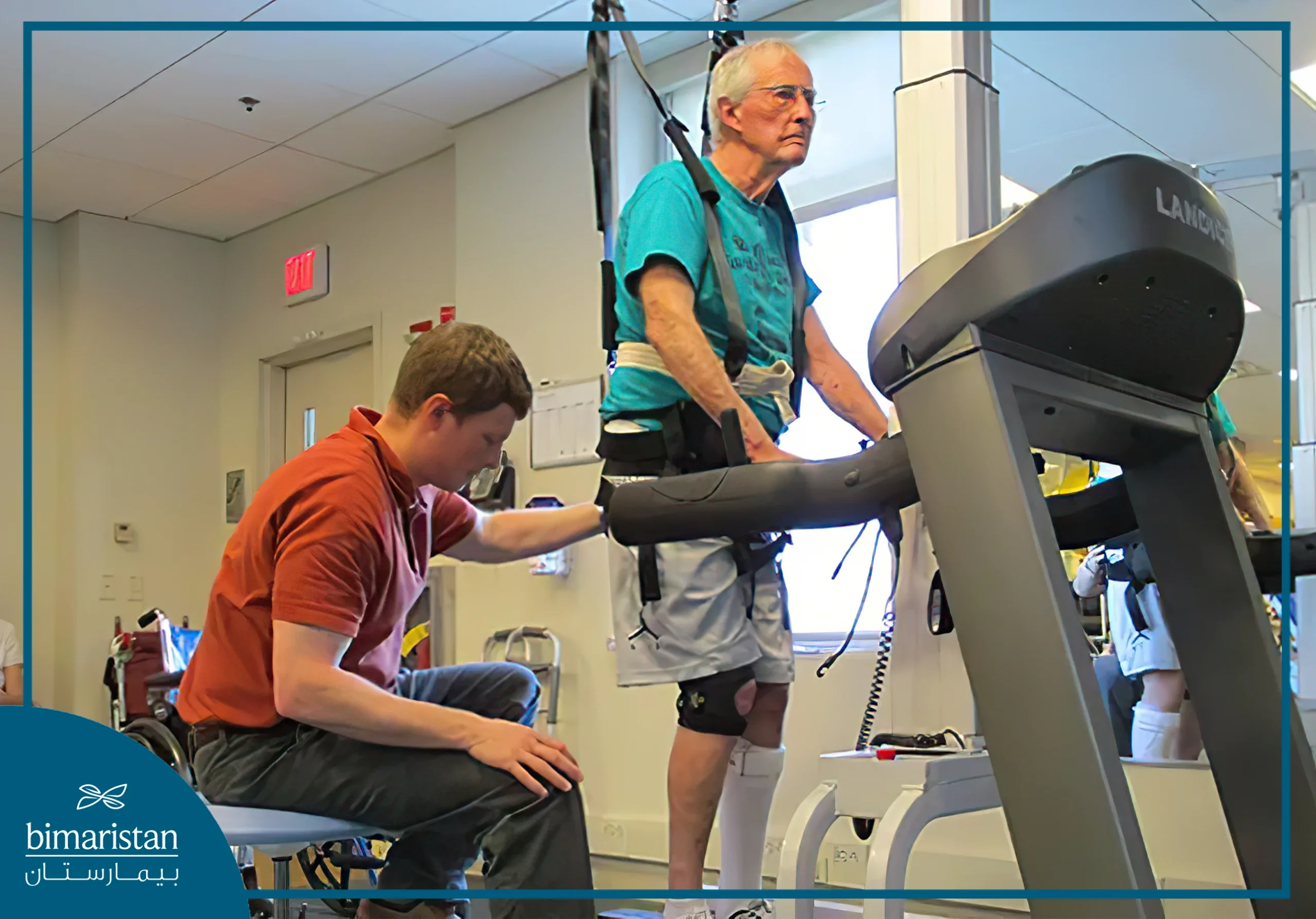
Speech Therapy in Turkey
This process aims to rehabilitate patients with aphasia or a language disorder resulting from a neurological injury such as a stroke. It should be noted that a third of patients who have had a stroke suffer from a language communication disorder. Read more about aphasia in adults.
The main problem that the patient suffers from is the difficulty in expressing what he wants and not a cognitive problem related to intelligence. The rehabilitation specialist evaluates the patient and determines the degree of damage and functional disability. Does the patient suffer from difficulty understanding what is said to him, or does the patient understand what is said to him but cannot express what he wants, or does the patient suffer from muscle weakness that prevents him from speaking? This helps determine the best way to approach the patient and manage his condition.
The rehabilitation specialist works side by side with the patient through rehabilitation sessions to improve the ability to communicate and help the patient achieve the goals he aspires to. These sessions may be conducted directly or remotely via the Internet.
The patient is trained to repeatedly make certain sounds and common rhythms, such as saying good morning. In the case of severe injuries, the patient is trained to use a special board or an electronic device that helps him communicate by writing what he wants.
Neuropsychological rehabilitation in Turkey
The field of neuropsychological rehabilitation is concerned with supporting and caring for children and adults who suffer from psychological or behavioral disorders that hinder their normal life and cause them or their families life difficulties.
This department deals with people who suffer from cognitive problems such as disorganized thinking, poor planning, and poor time management. It also addresses social issues, such as difficulty making friends and dealing with others, and academic concerns, such as difficulty doing homework and academic failure.
Vision rehabilitation
Reversible vision impairment resulting from nerve damage does not include permanent vision loss, which is often irreversible. Vision is often improved with contact lenses or special eyeglasses, or medications or surgery may be used to manage vision impairment.
Noninvasive Brain Stimulation
One of the advanced methods in the field of neurorehabilitation uses modern technology. Using electromagnetic signals sent through the skull to the brain allows for increased brain stimulation and stimulation to accelerate the response. The neurostimulation program is often combined with physical therapy, which improves the results of physical therapy.
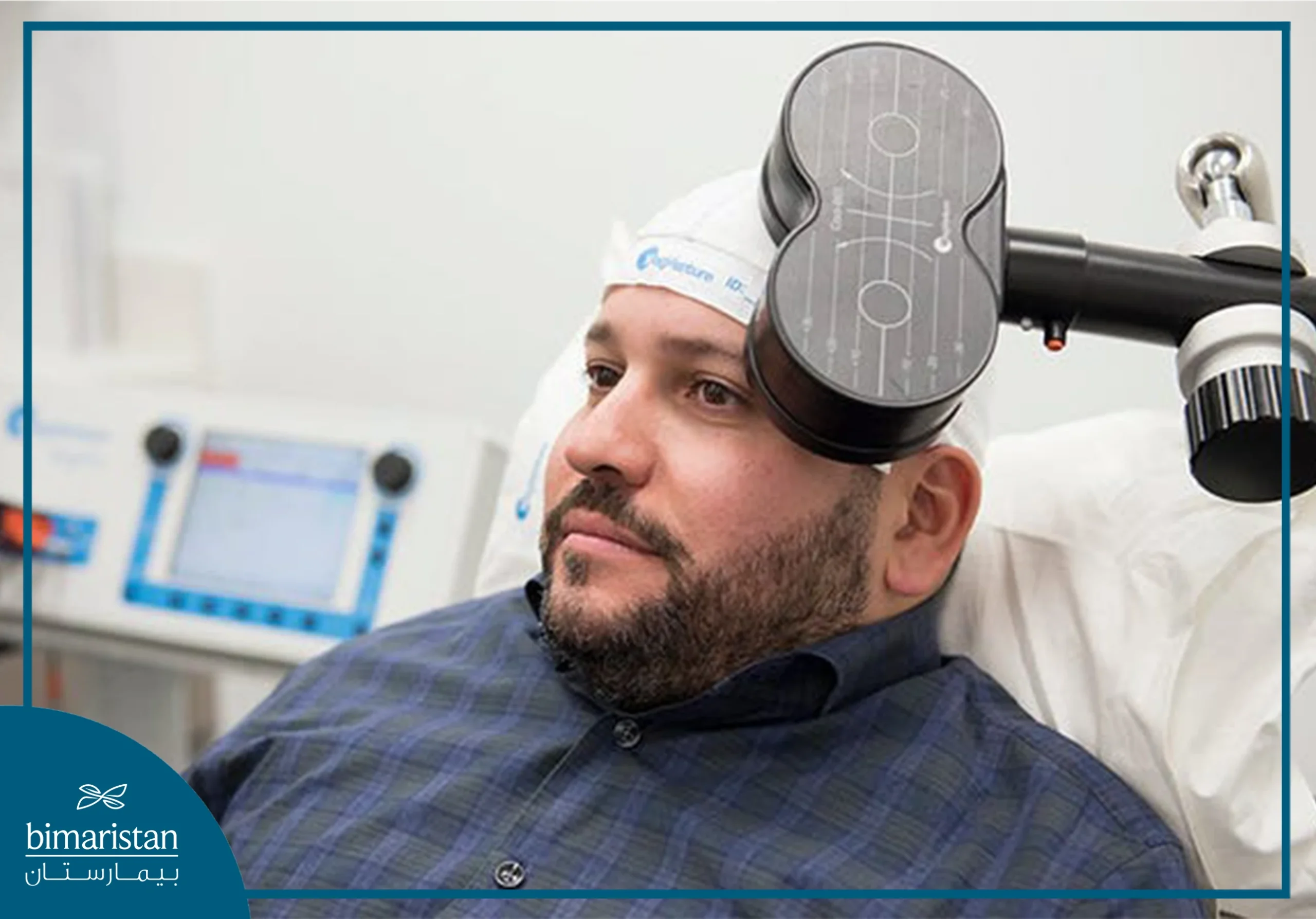
Objectives of rehabilitation programs in Turkey
The objectives of the neurorehabilitation program vary depending on the patient’s condition and the problem he suffers from. The most important of these are:
- Improving the body’s motor functions and reducing the resulting disability
- Treating communication, speech, and vision disorders
- Restoring and improving the quality of life and the ability to perform daily tasks
- Treating the disorder at the level of the sphincters
- Improving intellectual functions, memory, and the ability to learn
- Managing movement disorders, gait, and muscle weakness
Sources:
- johns Hopkins
- Penn medicine
